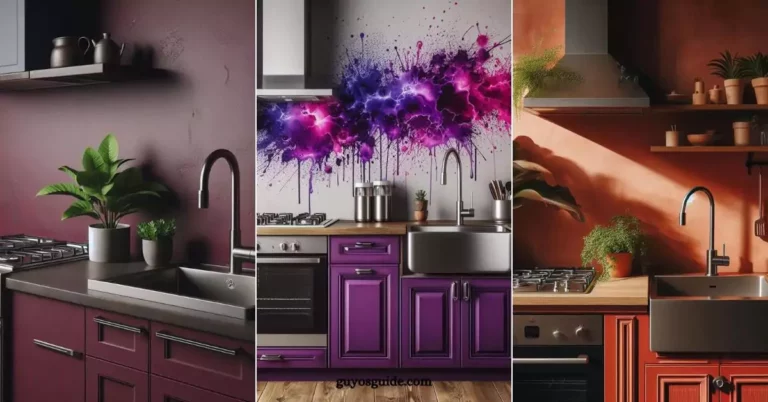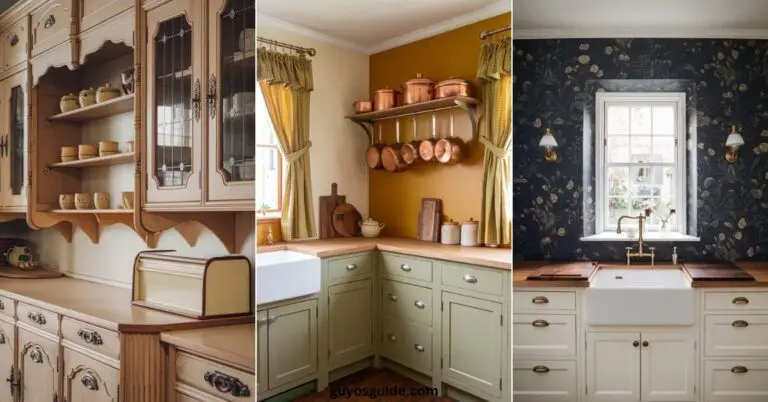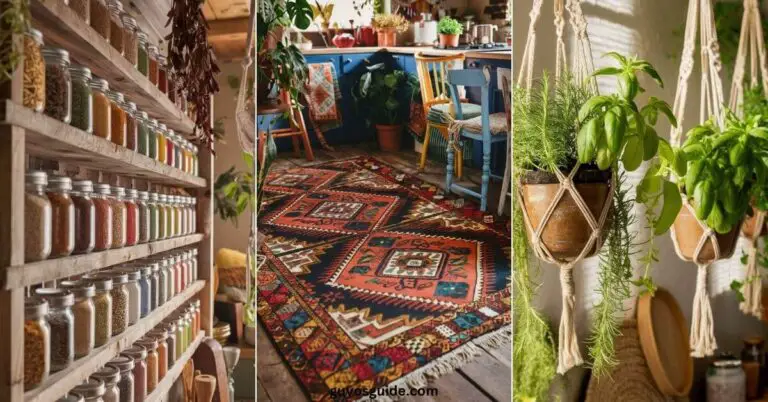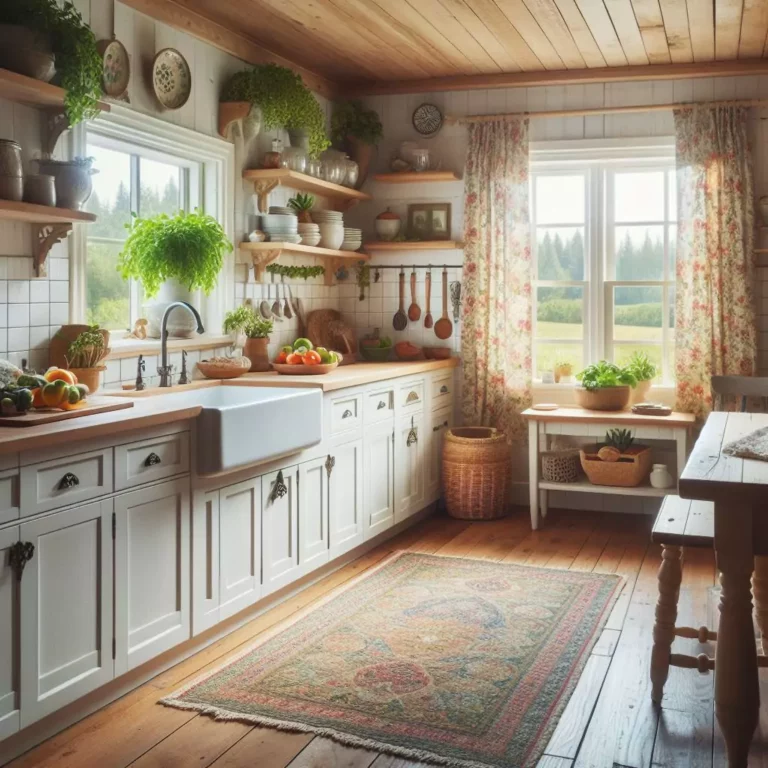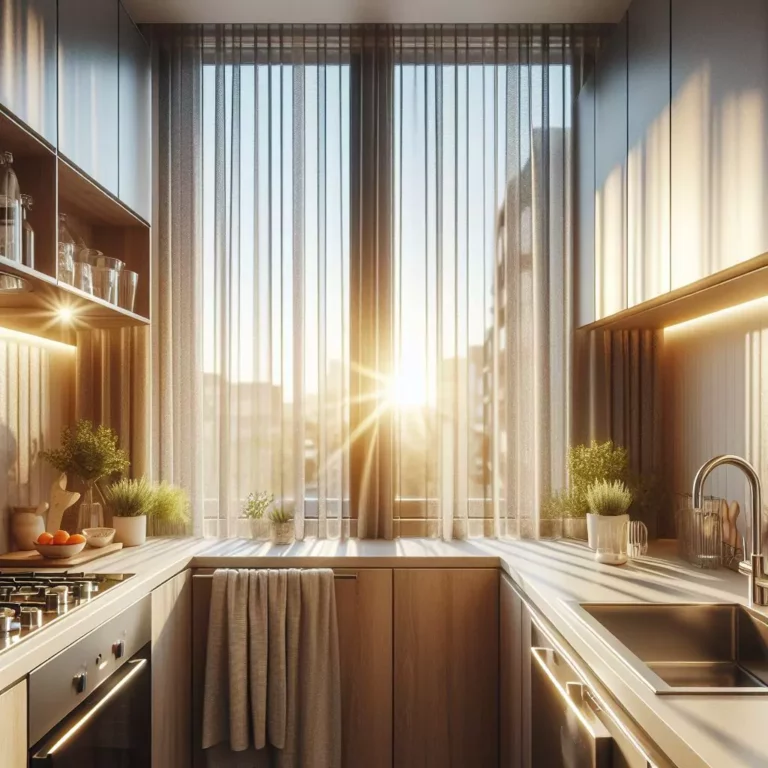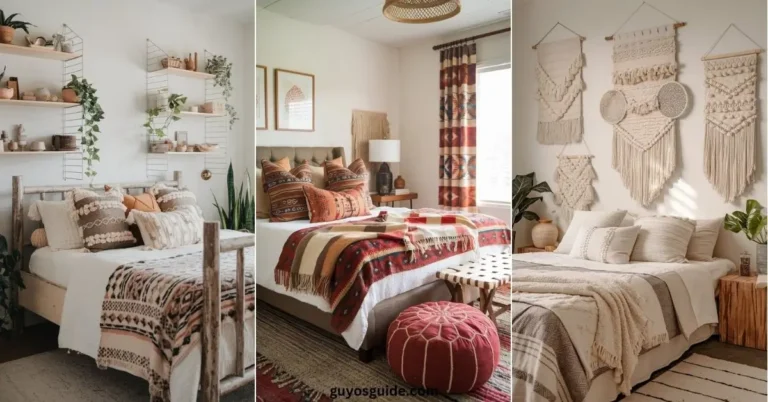25 Chic Transitional Bedroom Ideas for a Timeless Look
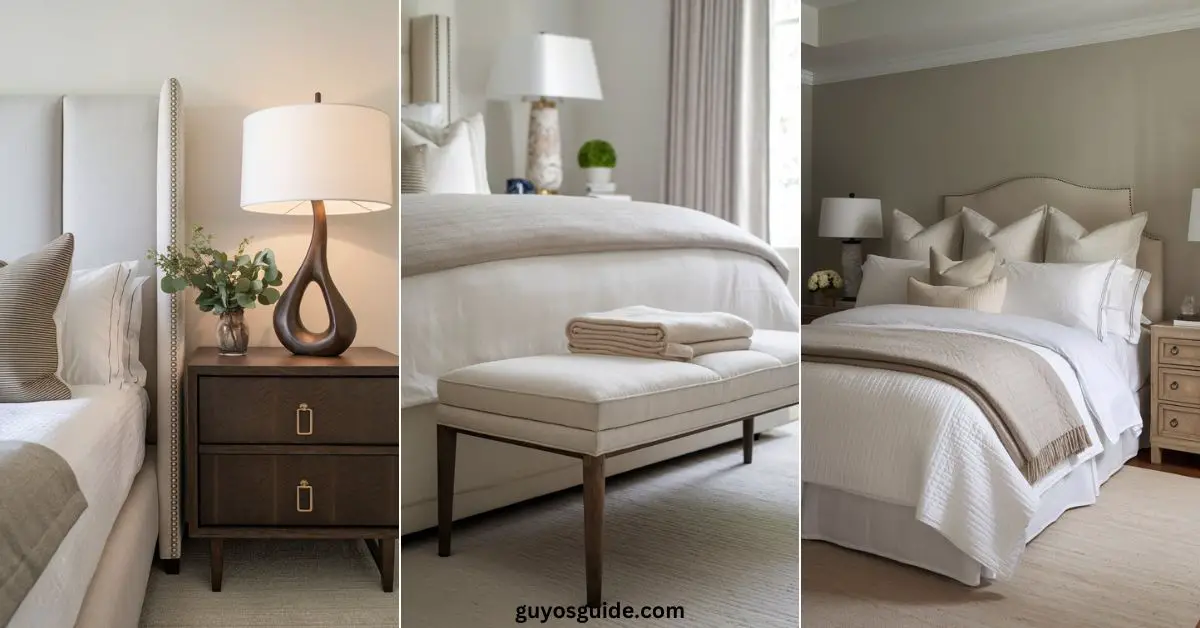
Want a bedroom that feels both modern and cozy?
A transitional bedroom mixes classic and modern styles for the perfect balance.
In this article, we’ll share simple ideas to create a beautiful and relaxing space.
Ready to give your bedroom a fresh new look?
Let’s get started!
1. Layer Neutrals for a Soft, Sophisticated Look
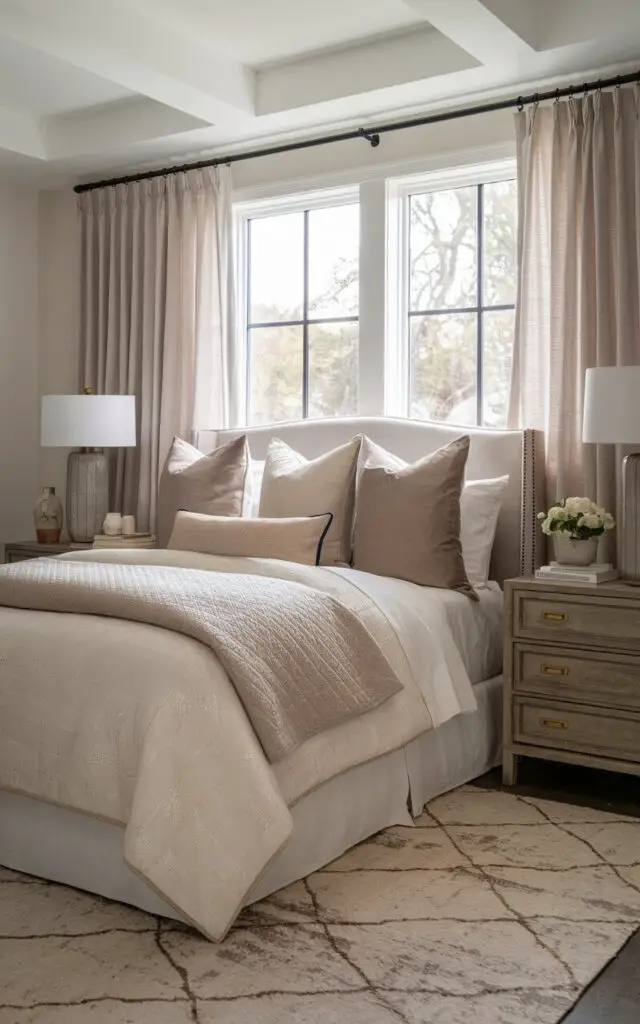
Transitional bedrooms thrive on a neutral palette, but layering is key to avoiding a flat or sterile look.
Mix warm and cool neutrals—think ivory, greige, taupe, and soft gray—throughout bedding, curtains, and upholstery.
Add depth with textured throw pillows, a plush area rug, or a quilted headboard.
The result is a space that feels elegant, calming, and effortlessly balanced.
Recommended Article: 25 Timeless Transitional Living Room Ideas
2. Choose Statement Lighting
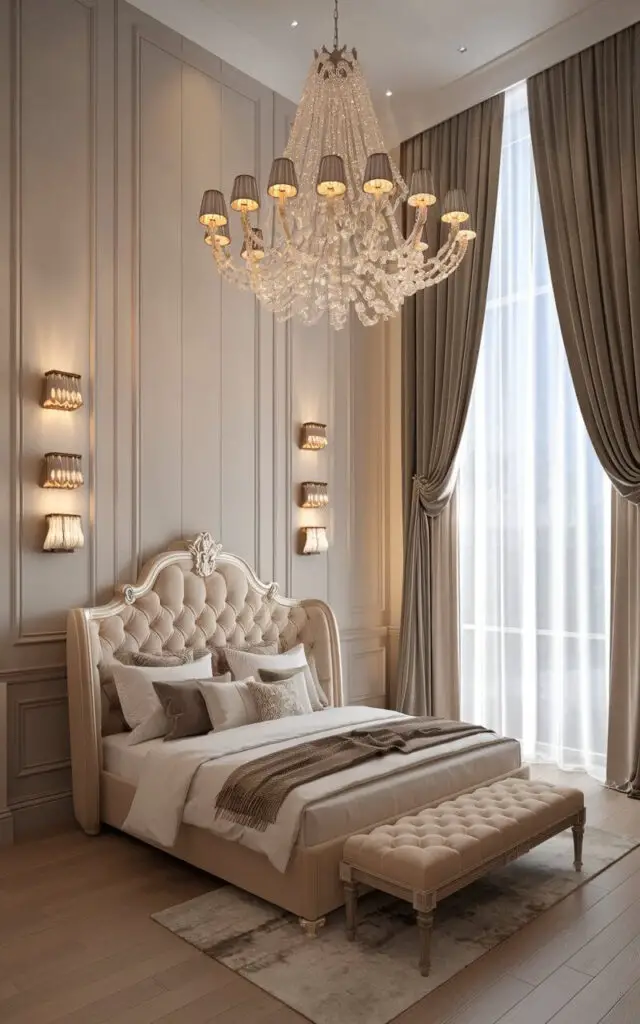
A transitional bedroom benefits from a stunning light fixture that bridges classic and modern design.
Consider a sleek chandelier with vintage-inspired detailing, a pair of sculptural sconces, or a contemporary pendant with traditional touches.
A well-chosen light fixture sets the tone, making the space feel refined without being overly formal.
3. Mix Traditional and Modern Furniture
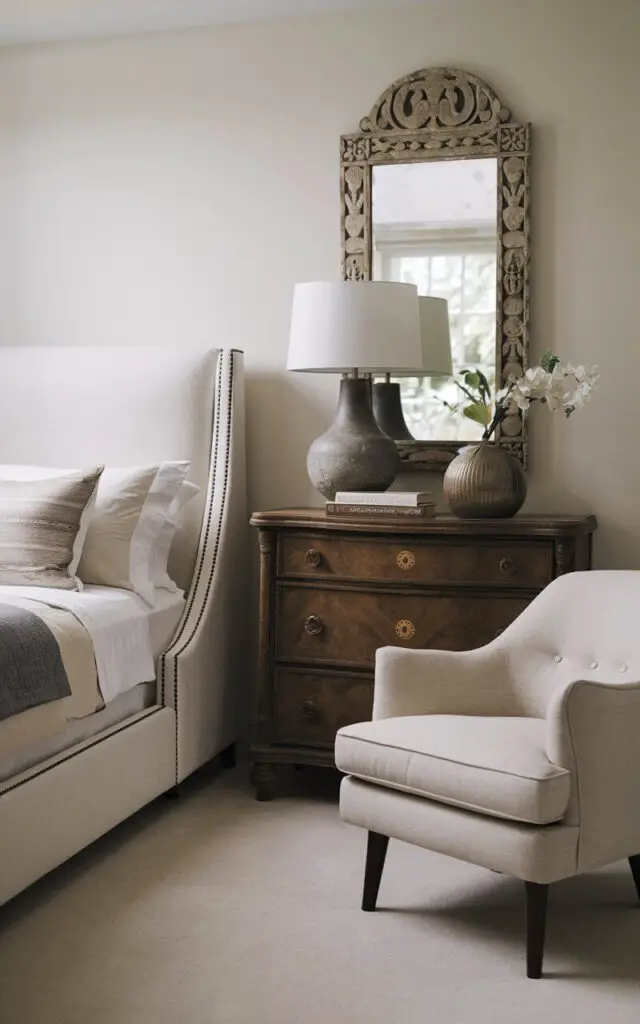
The magic of a transitional bedroom lies in its blend of classic and contemporary furniture pieces.
Pair a streamlined upholstered bed with an ornate wooden dresser, or place mid-century nightstands beside a tufted headboard.
The key is balance—mixing old and new in a way that feels intentional, not haphazard.
4. Incorporate Subtle Patterns
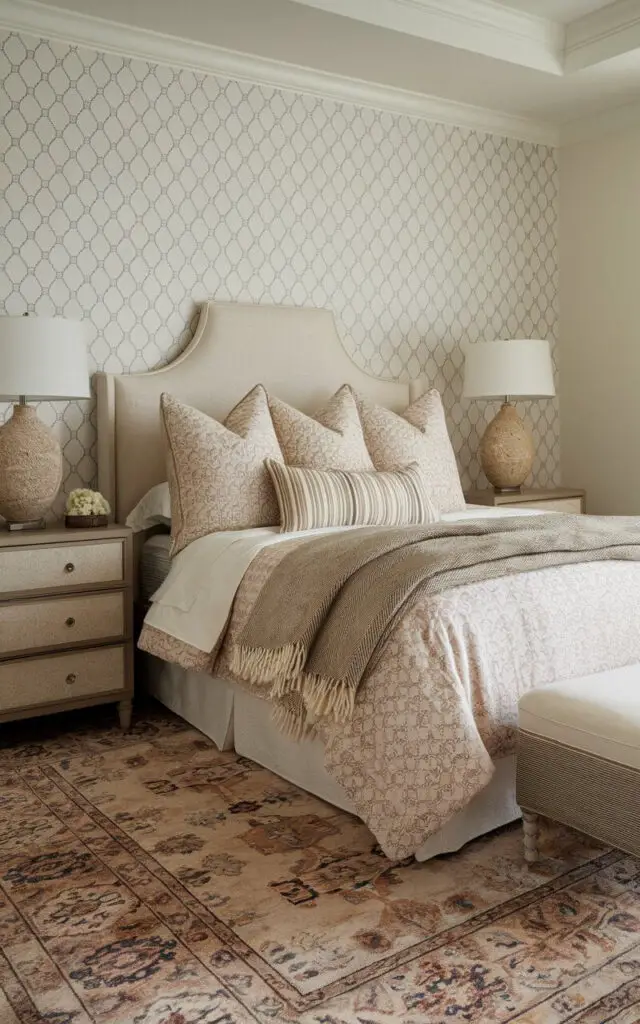
Patterns bring visual interest without overwhelming the serene nature of a transitional bedroom.
Stick to subtle designs like herringbone, damask, or geometric prints in neutral tones.
Use them on wallpaper, bedding, or area rugs to add a hint of personality while maintaining a cohesive, polished aesthetic.
5. Add a Statement Headboard
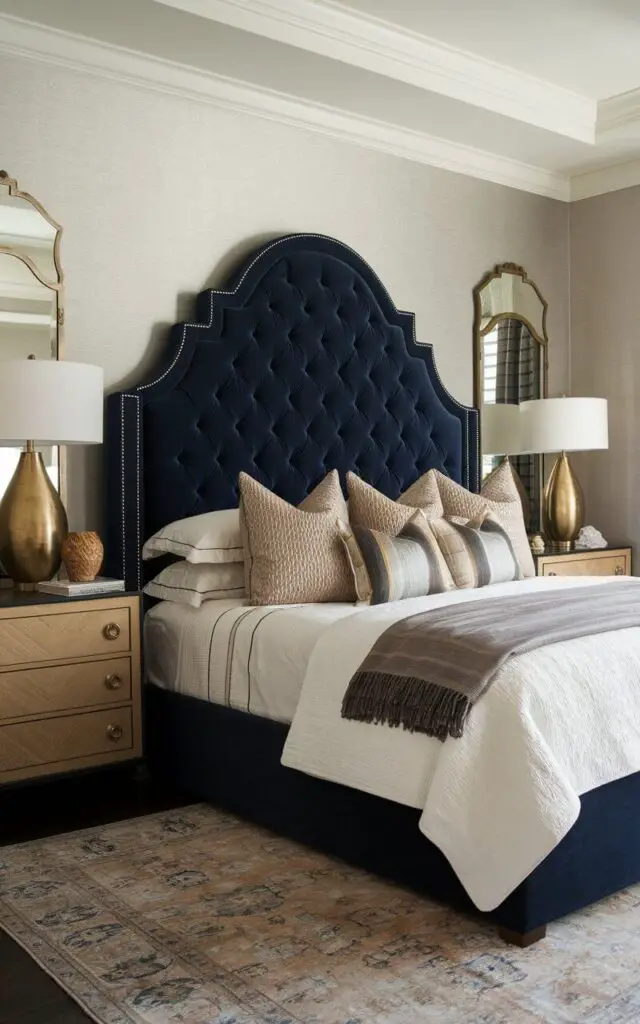
A headboard can anchor the room, setting the stage for the entire design.
Opt for a tufted fabric headboard for a soft, luxurious touch, or choose a sleek wooden design with intricate detailing.
A well-chosen headboard blends old-world charm with modern sophistication, perfectly capturing the transitional style.
6. Use Luxe Textiles for Comfort
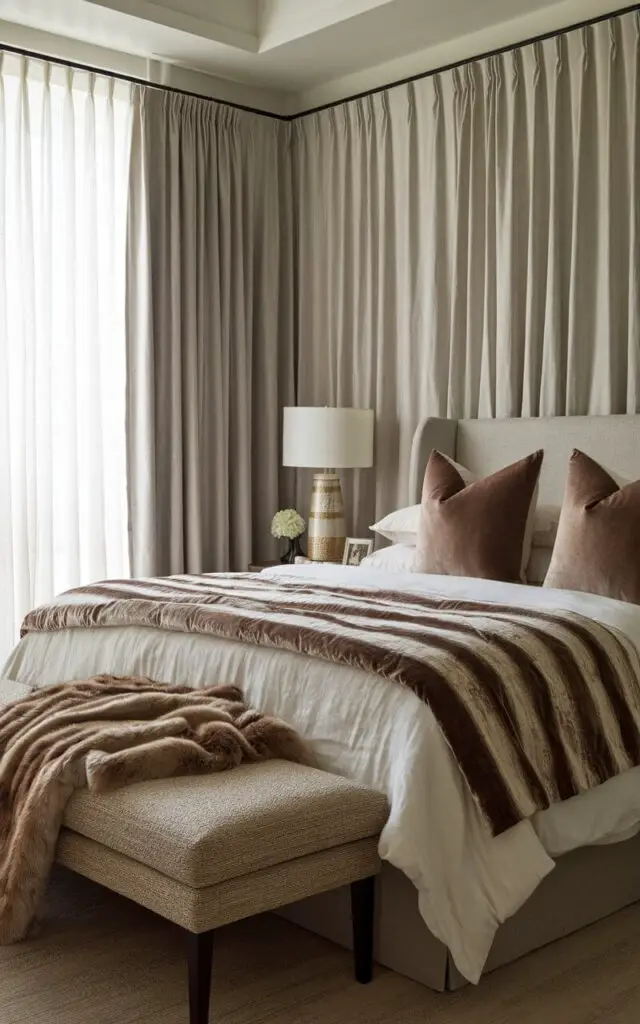
Textiles are crucial in a transitional bedroom, providing both comfort and elegance.
Layer a bed with high-thread-count sheets, linen duvets, and velvet or silk throw pillows.
A cashmere or faux fur throw draped over the foot of the bed adds a cozy yet refined feel that makes the space truly inviting.
7. Keep the Color Palette Timeless

A neutral foundation with pops of muted blues, sage greens, or warm terracotta creates a timeless aesthetic.
These hues bring personality without overpowering the transitional look.
Stick to classic shades for larger elements, then introduce seasonal or trend-based colors through accent pillows or artwork.
Recommended Article: 23 Transitional Dining Room Ideas
8. Frame the Bed With Stylish Nightstands

Nightstands do more than hold your bedtime essentials—they shape the room’s overall look.
Opt for pieces with clean lines and elegant finishes, like dark-stained wood with brass handles or minimalist lacquered tables.
A matching pair provides symmetry, but mixing styles can add a curated, layered feel.
9. Choose the Right Window Treatments
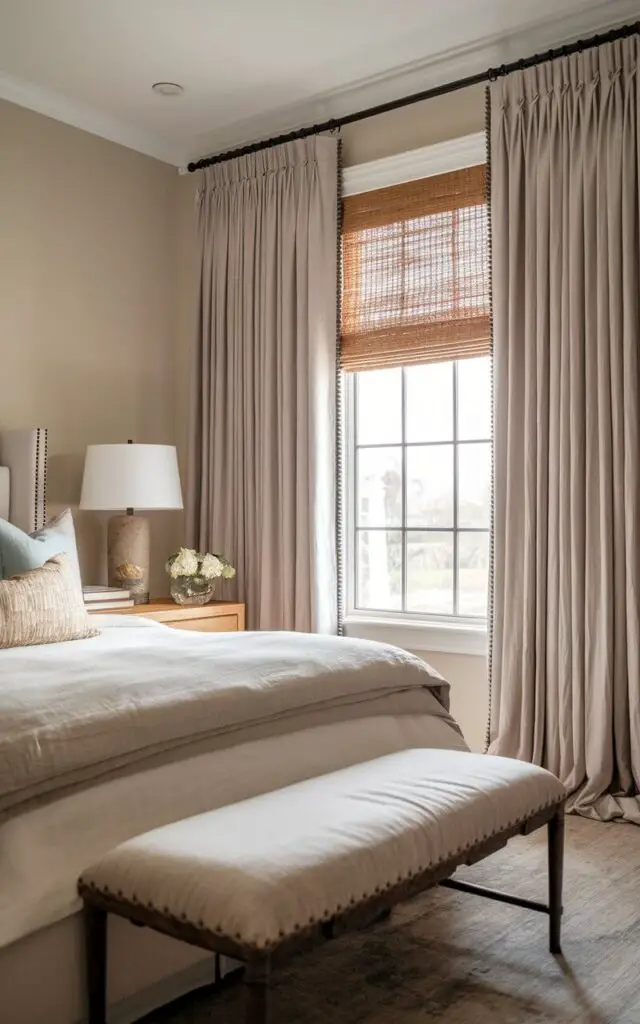
Window treatments play a huge role in a transitional bedroom’s design.
Soft, flowing drapes in linen or velvet bring an elegant touch, while woven shades add a subtle texture.
Opt for neutral hues to maintain a calm atmosphere, and consider layering sheer curtains for a sophisticated, light-filled look.
10. Create a Cozy Reading Nook
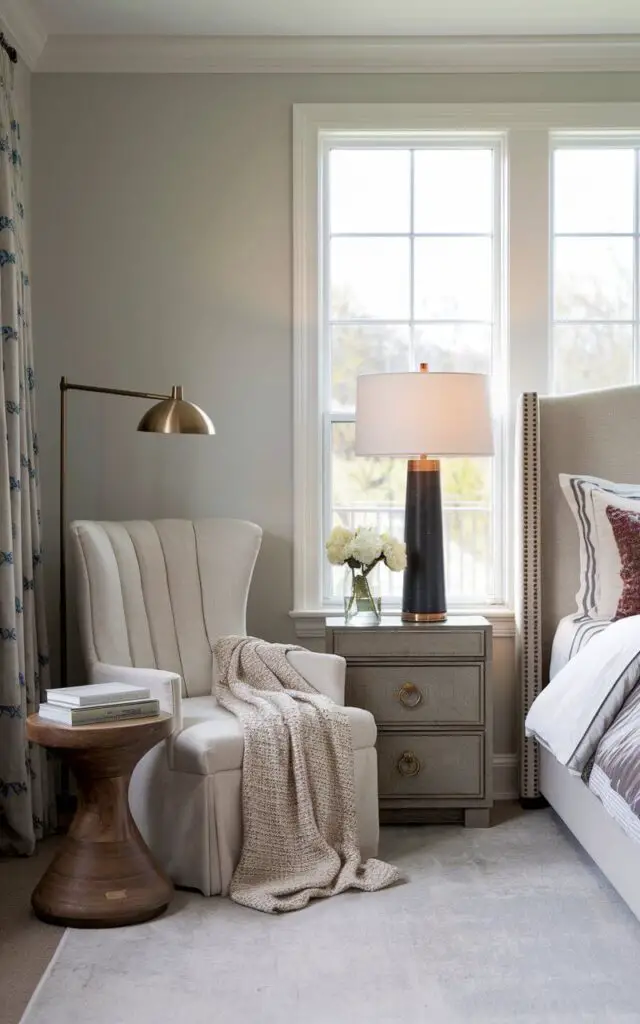
A well-placed accent chair, a stylish floor lamp, and a small side table can transform a corner into a cozy retreat.
A transitional bedroom isn’t just for sleeping—it should be a space to relax.
Choose an upholstered armchair with sleek lines and a soft neutral tone to keep the look cohesive.
11. Blend Wood and Metal Accents
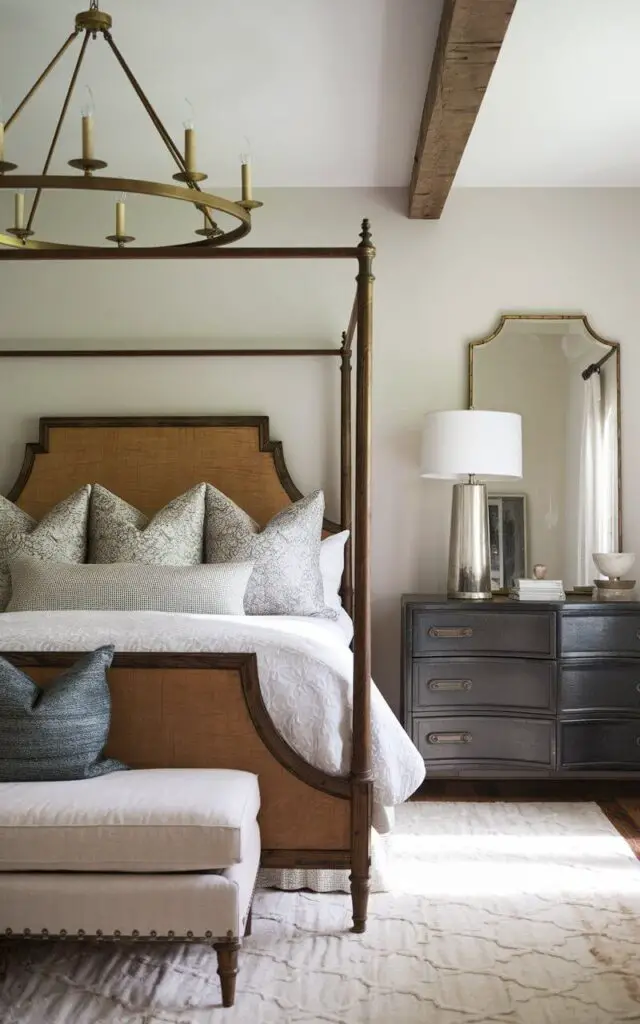
A signature of transitional design is the combination of wood and metal.
Incorporate wooden furniture pieces with metal accents, such as a dresser with brass handles or a bed frame with iron detailing.
This blend ensures the space feels grounded and timeless with just the right touch of contrast.
12. Highlight Architectural Details
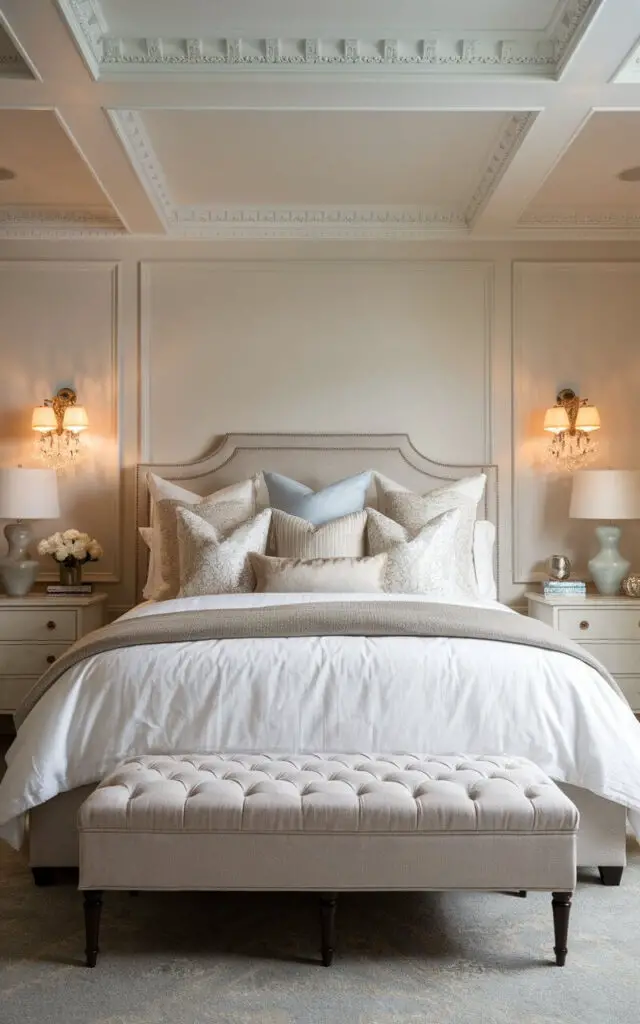
If your bedroom has crown molding, wainscoting, or exposed beams, highlight them with a soft, neutral paint color.
If not, add architectural interest with a paneled accent wall or decorative trim.
These elements elevate the design, making the room feel more refined and thoughtfully designed.
13. Keep the Bedding Classic Yet Inviting
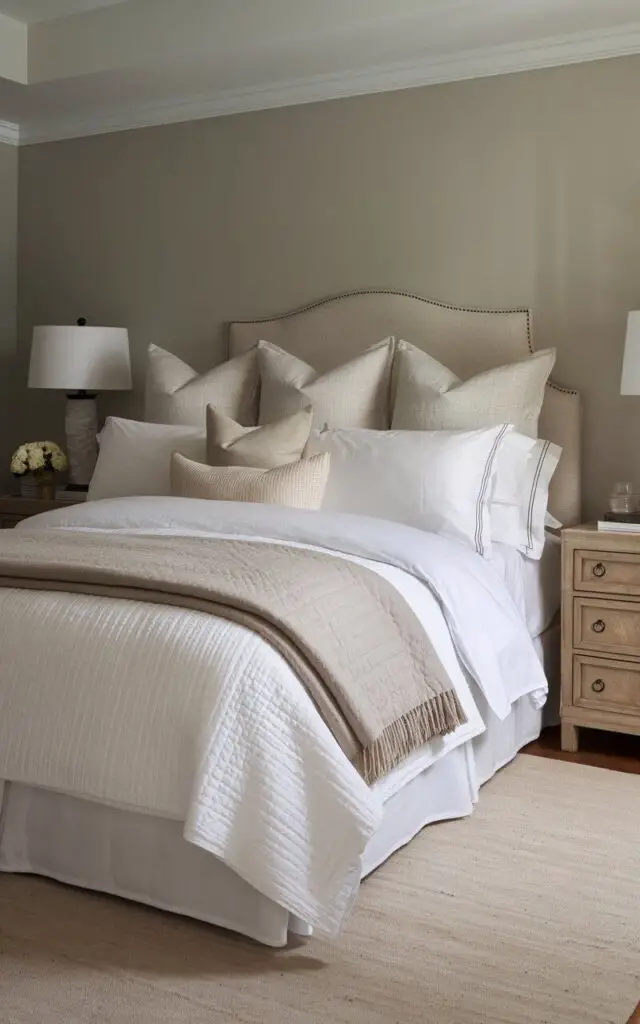
Crisp white sheets, a plush duvet, and a mix of structured and relaxed pillows create an inviting bed.
Stick to high-quality materials like cotton percale or linen for an effortless yet elegant look.
Avoid overly busy patterns—keep it simple with textures and tonal layering.
14. Incorporate an Elegant Bench at the Foot of the Bed
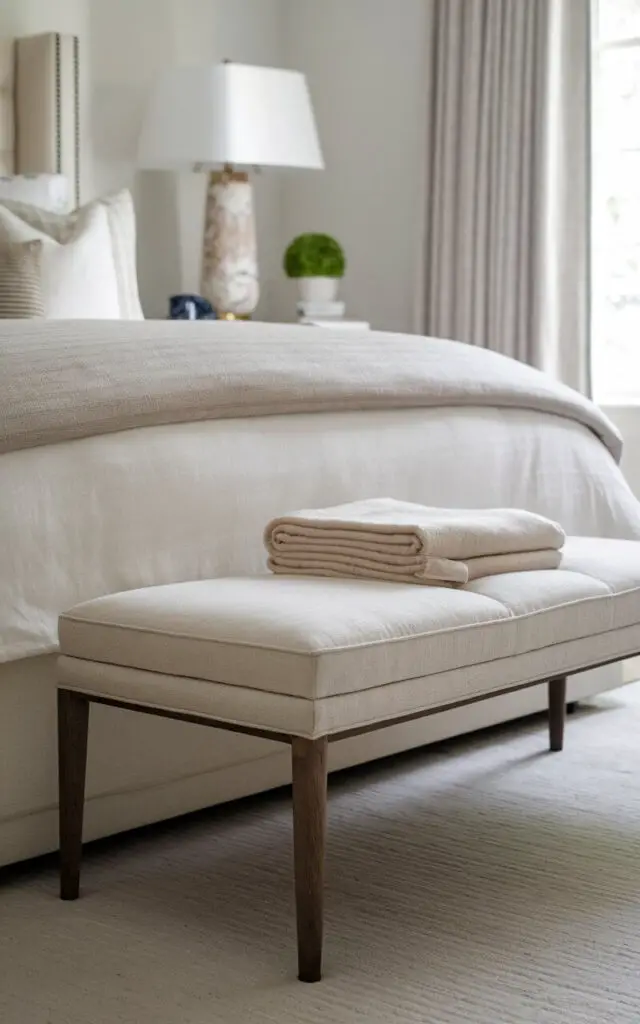
A well-placed bench adds functionality and a polished touch.
Choose an upholstered option in a neutral fabric or a wooden bench with a sleek design.
Not only does it provide extra seating, but it also helps frame the bed, creating a balanced, well-proportioned space.
15. Embrace Minimalist Decor With Meaningful Touches
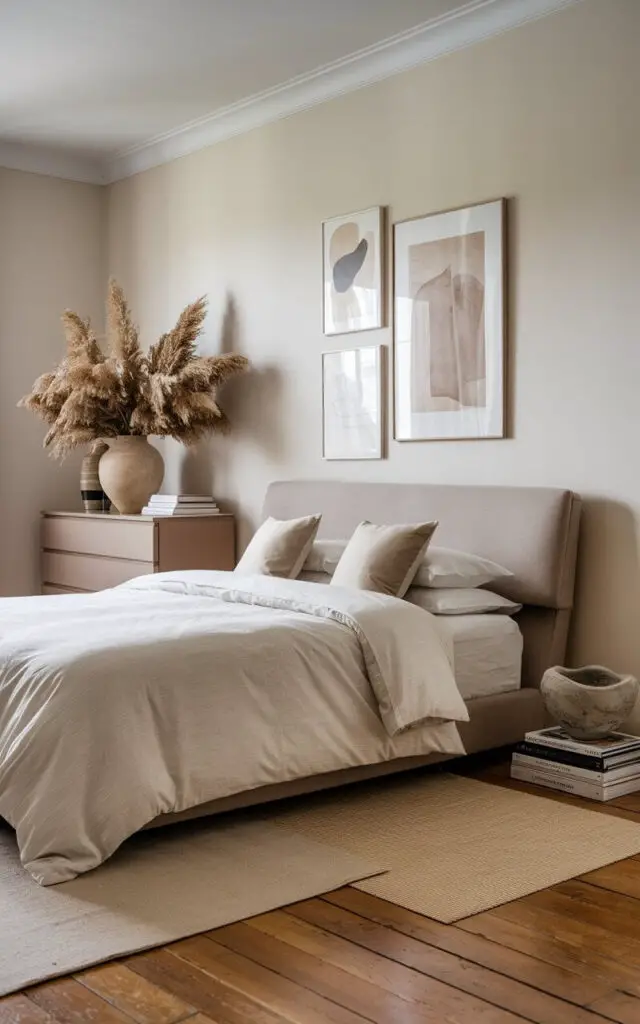
Transitional bedrooms are neither cluttered nor bare—find a balance by choosing decorative pieces thoughtfully.
A few well-placed framed prints, an elegant vase, or a sculptural object on a dresser keeps the space sophisticated yet personal.
Less is more, but every piece should feel intentional.
16. Introduce Soft Ambient Lighting
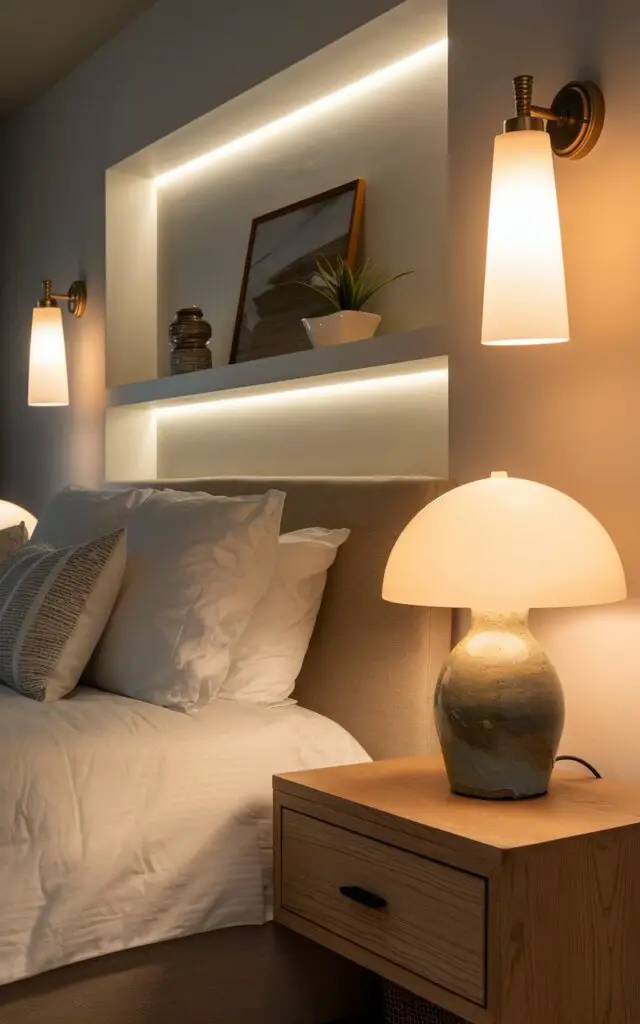
Layered lighting is essential for a transitional bedroom.
In addition to a statement ceiling fixture, incorporate bedside lamps, wall sconces, or dimmable LED strips.
Warm, soft lighting enhances the inviting atmosphere, allowing you to create the perfect mood for relaxation.
17. Mix Matte and Glossy Finishes
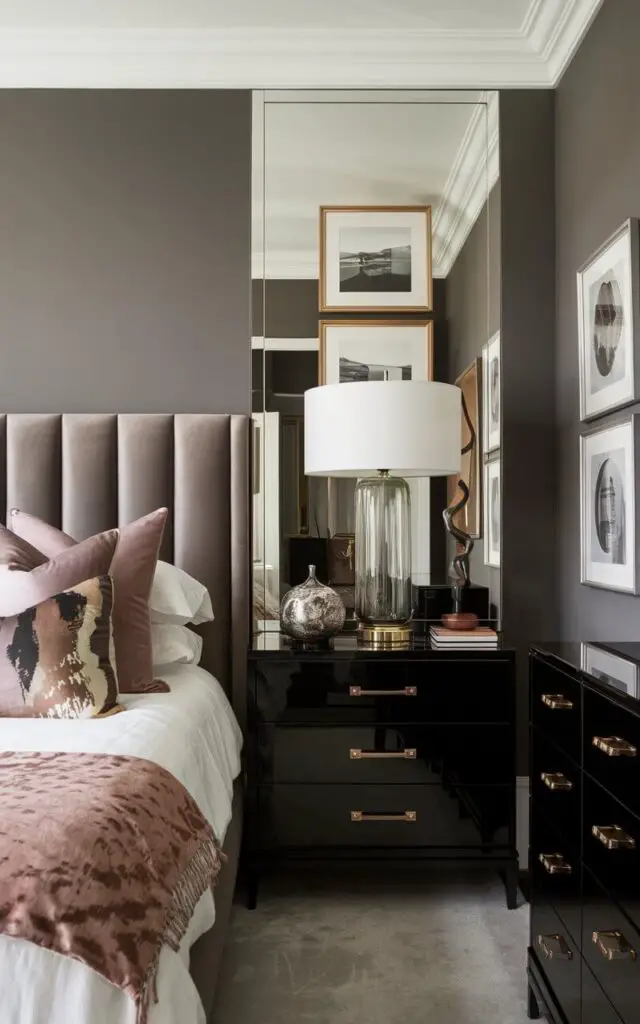
To create depth and interest, mix matte and glossy finishes in the bedroom.
A matte-painted wall with a lacquered nightstand or a high-gloss dresser with linen bedding adds visual variety.
This subtle contrast keeps the space dynamic without straying from its sophisticated feel.
18. Add a Leaning Mirror for Depth
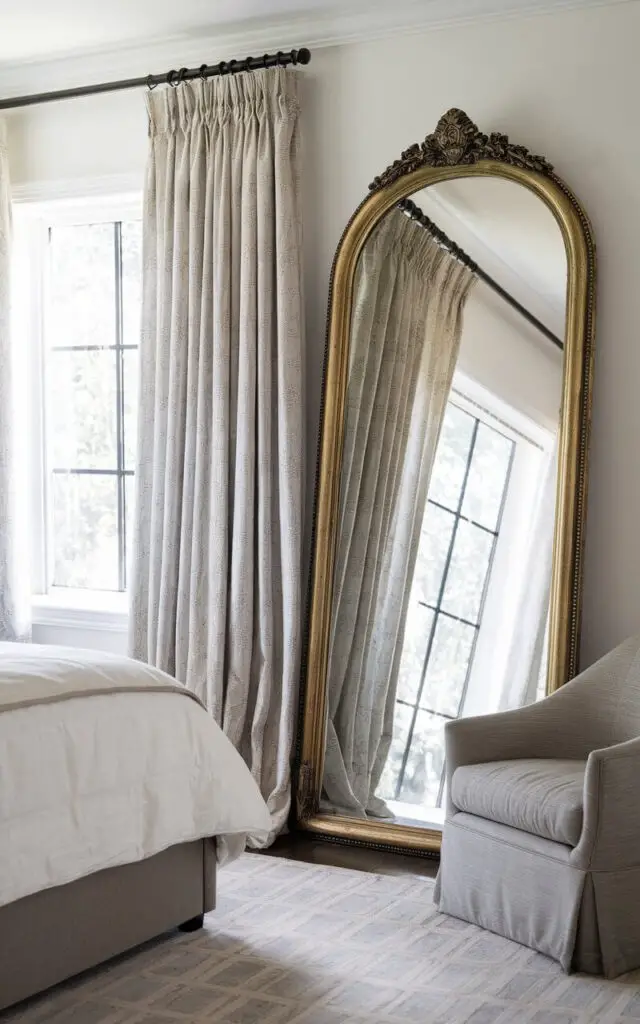
A full-length leaning mirror not only enhances natural light but also creates an illusion of more space.
Choose a sleek, understated frame in wood or metal to maintain the transitional balance.
Whether propped against a wall or placed near a window, it brings an airy, refined look.
19. Incorporate Organic Elements
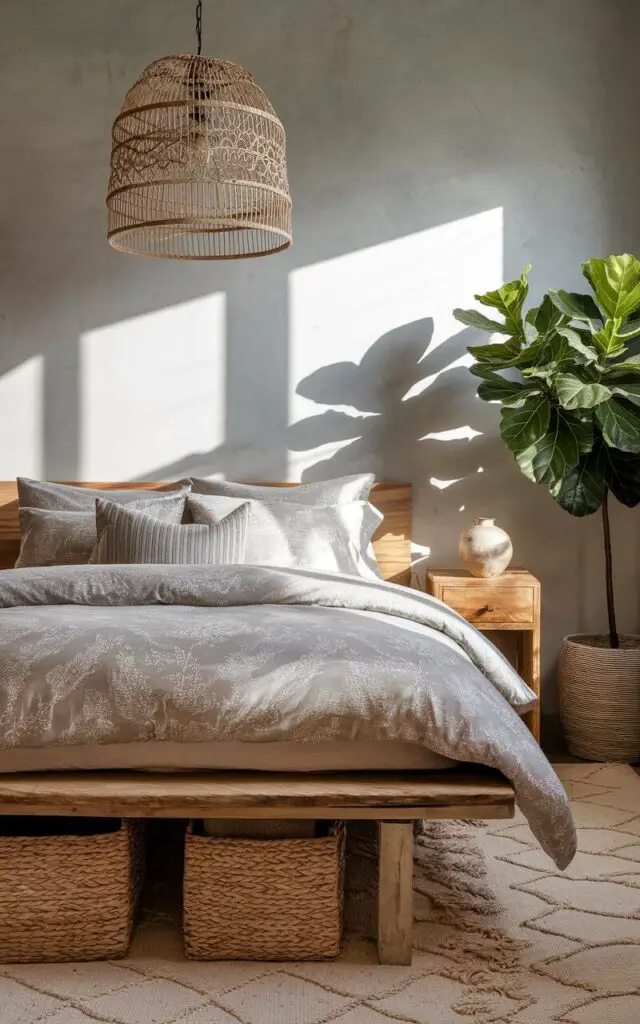
Natural elements like rattan, stone, or greenery soften the structured lines of transitional design.
A ceramic vase with fresh branches, a woven storage basket, or a wooden bowl on a dresser introduces warmth and an organic touch without disrupting the overall elegance.
20. Opt for a Timeless Area Rug
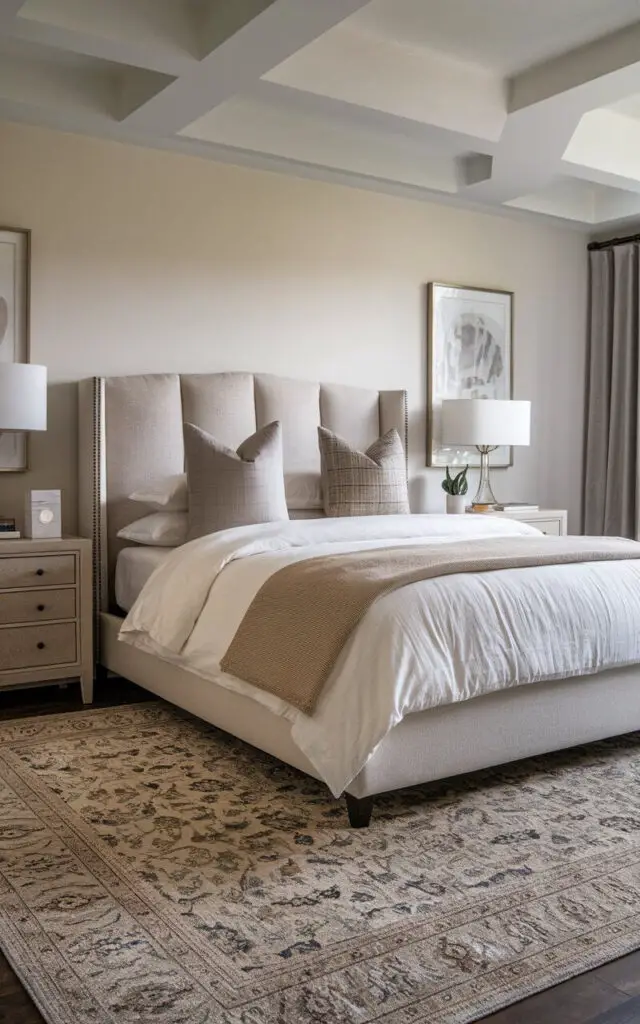
An area rug ties the bedroom together, grounding the furniture while adding softness underfoot.
Opt for a classic Persian rug in muted tones or a neutral wool rug with a subtle pattern.
The right rug enhances the transitional balance—classic yet fresh, cozy yet refined.
21. Experiment With Muted Accent Walls
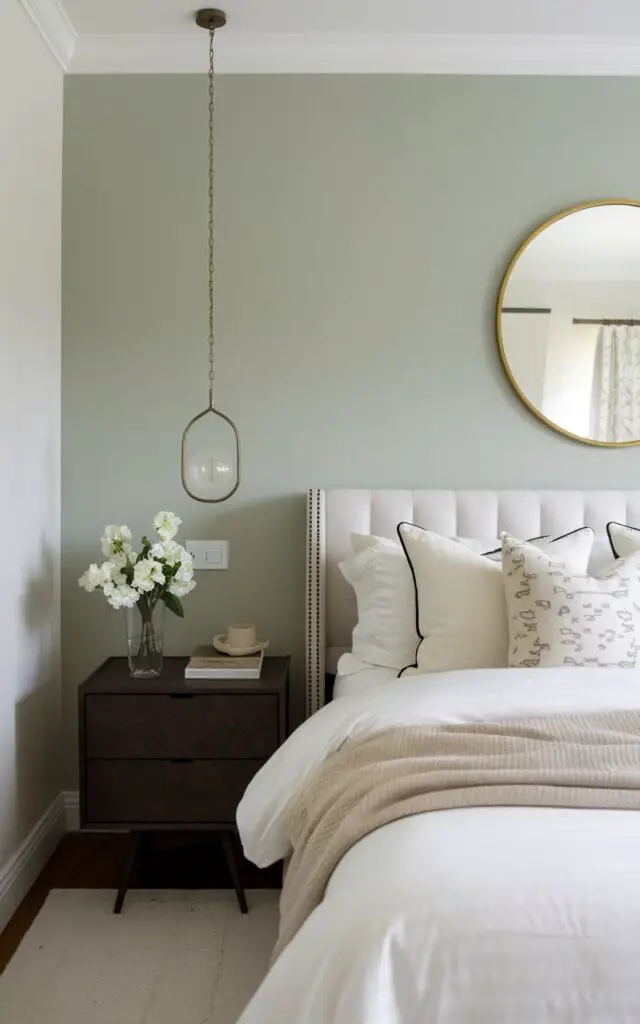
Instead of bold colors, consider a muted accent wall in a soft taupe, dusty blue, or sage green.
This subtle contrast adds depth while maintaining a tranquil, timeless feel.
Pair it with crisp white trim for a fresh yet elegant look that stands the test of time.
22. Display a Carefully Curated Art Collection
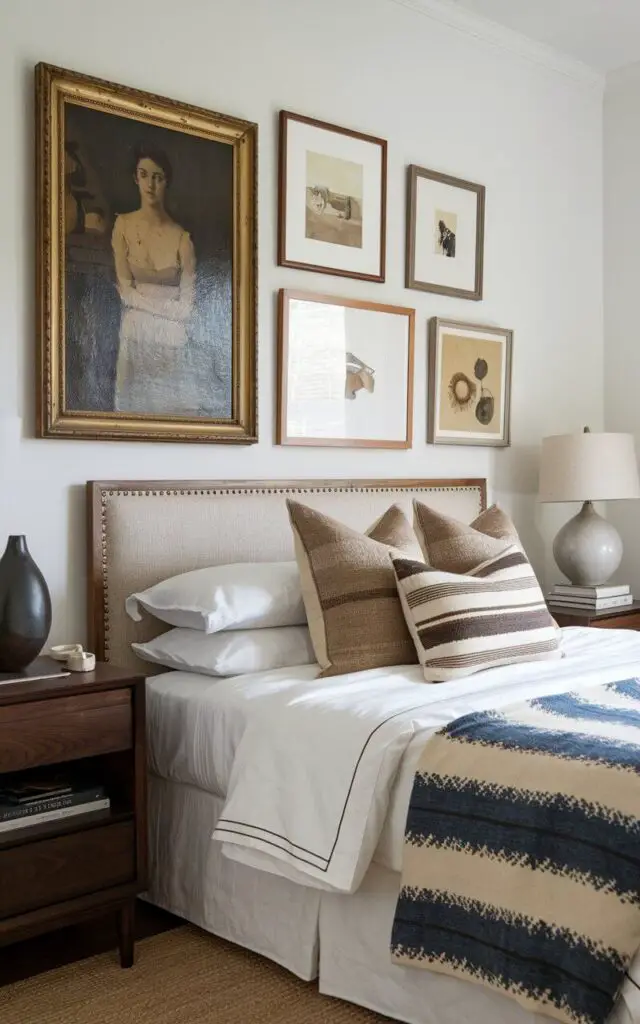
Choose artwork that bridges the gap between modern and traditional aesthetics.
Black-and-white photography, abstract prints, or vintage oil paintings in sleek frames create a cohesive gallery wall.
Keep the arrangement intentional—symmetry works well, but a slightly asymmetrical layout adds character.
23. Opt for Dual-Purpose Furniture
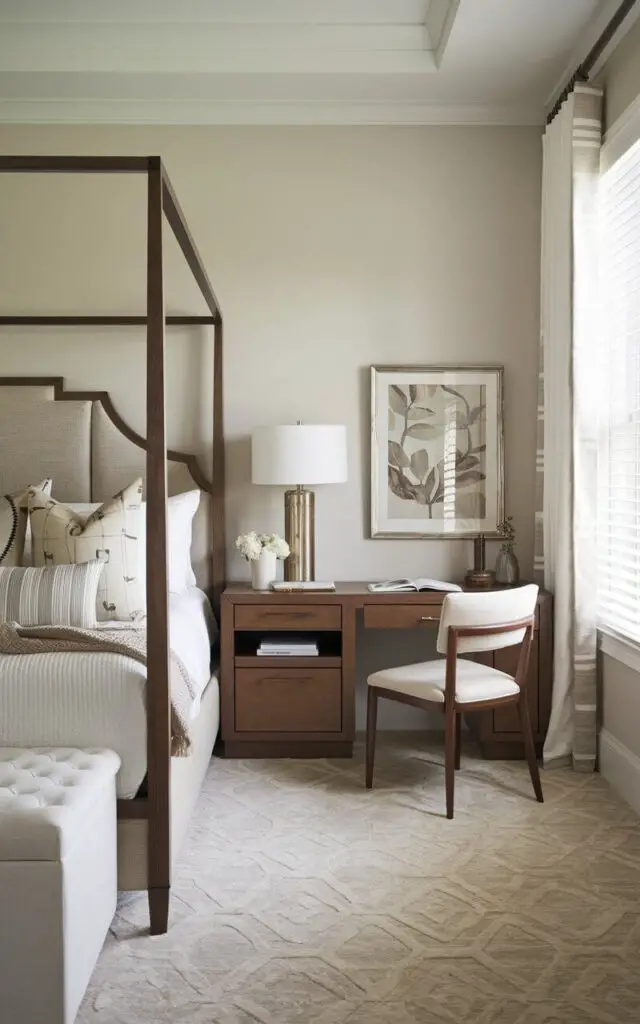
Maximize both form and function with multi-use furniture.
A sleek storage bench, an ottoman with hidden compartments, or a stylish writing desk that doubles as a vanity keeps the space practical without compromising on style.
Smart design choices ensure a clutter-free yet elegant look.
24. Balance Symmetry With Asymmetry
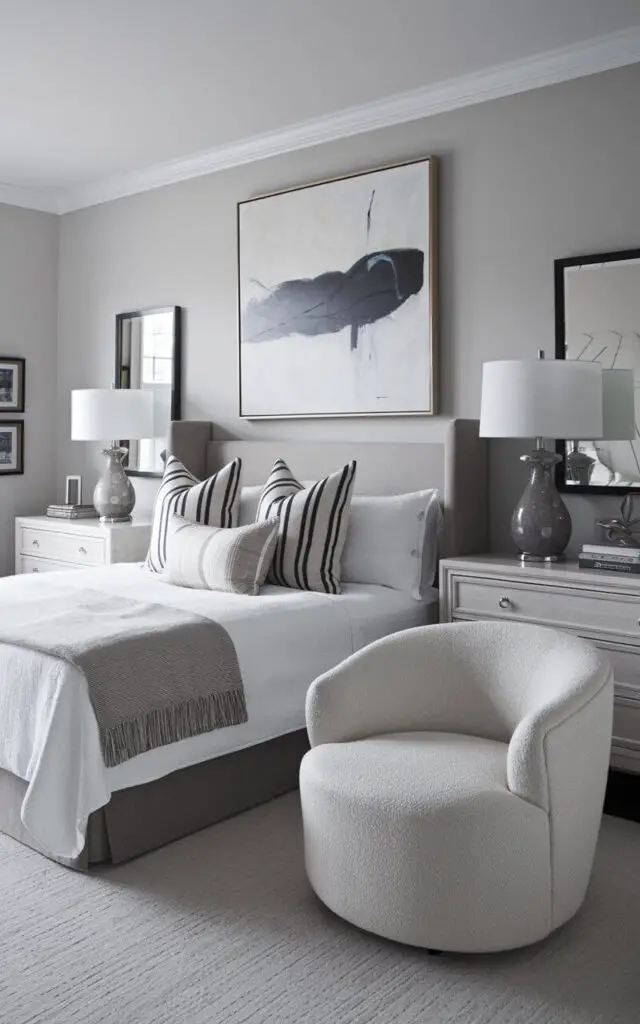
While symmetry creates a sense of order, a hint of asymmetry adds interest.
Matching bedside lamps and nightstands bring harmony, while an offset mirror or an unpaired accent chair keeps the space feeling natural and inviting.
The key is controlled contrast—structured yet relaxed.
25. Infuse Personal Touches for Warmth
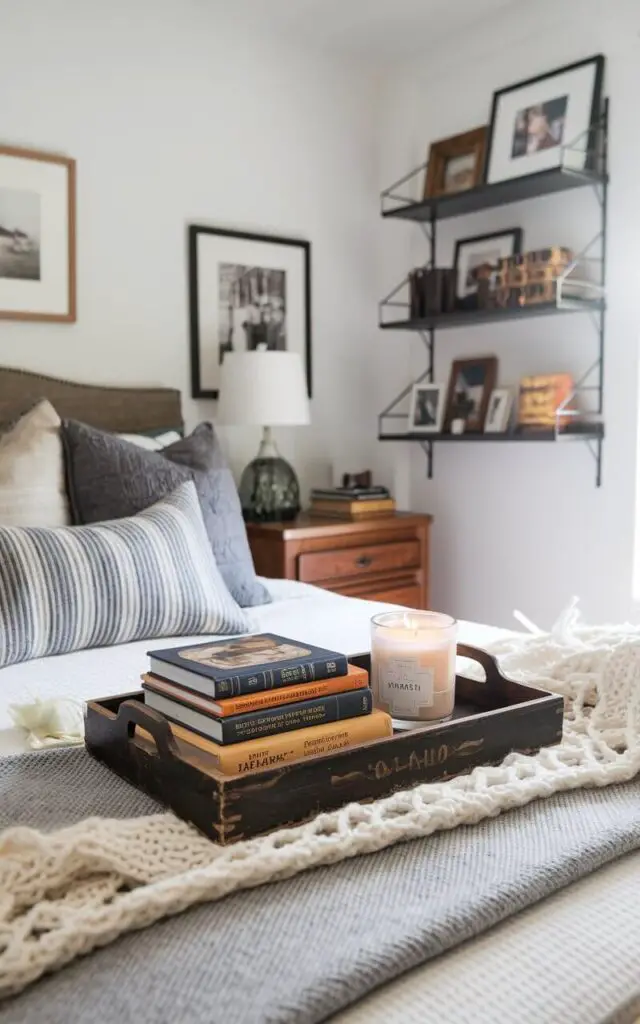
A transitional bedroom should feel like home. Incorporate personal details—a favorite book on the nightstand, a framed family photo, or a cherished heirloom—to make the space uniquely yours.
These small, meaningful touches ensure the room feels warm, inviting, and truly special.
Wrap Up
Creating a transitional bedroom is all about mixing classic and modern styles for a cozy, stylish space.
With the right colors, furniture, and textures, you can design a room that feels timeless and inviting.
Try these ideas and transform your bedroom into the perfect retreat.
Sweet dreams!


